Indoor palm trees - plants that are widely used for the design of greenhouses, offices and residential premises. Different species need certain conditions of detention, therefore, choosing a palm tree from the photo, it is important to familiarize yourself with not only the names, but also with the characteristics of the varieties before buying, in order to be able to assess the possibility of growing an exotic plant at home.
Content
Characteristics of home palm trees, names and varieties
Despite the fact that these representatives of the flora are quite unpretentious, some species cannot take root in the apartment and need greenhouse conditions. Varieties that easily adapt to indoor conditions are:
- Rapis
- Date palm;
- Howe;
- Washingtonia;
- Liviston;
- Hamedorea;
- Cariota
- Yucca.
A common feature of all species is oblong narrow leaves, the color and shape of which vary depending on the variety. The above species do not stretch more than 2 meters in height and are suitable for decorating apartments and private houses. They grow best near the southern and eastern windows, but some species take root on the western side. Without exception, all of them need regular watering and maintaining air humidity of at least 50%. Palm trees rarely bloom, even with good care.
Date
A palm tree belonging to the Arekov family is distinguished by a dense crown and cirrus narrow leaves. In the crown there can be up to 30 leaves that are bent down by an arc. Depending on the type (Robelin palm or Canary), the trunk may have a columnar shape or be short, strong and unbranched. On the surface of the trunk are hard stumps.
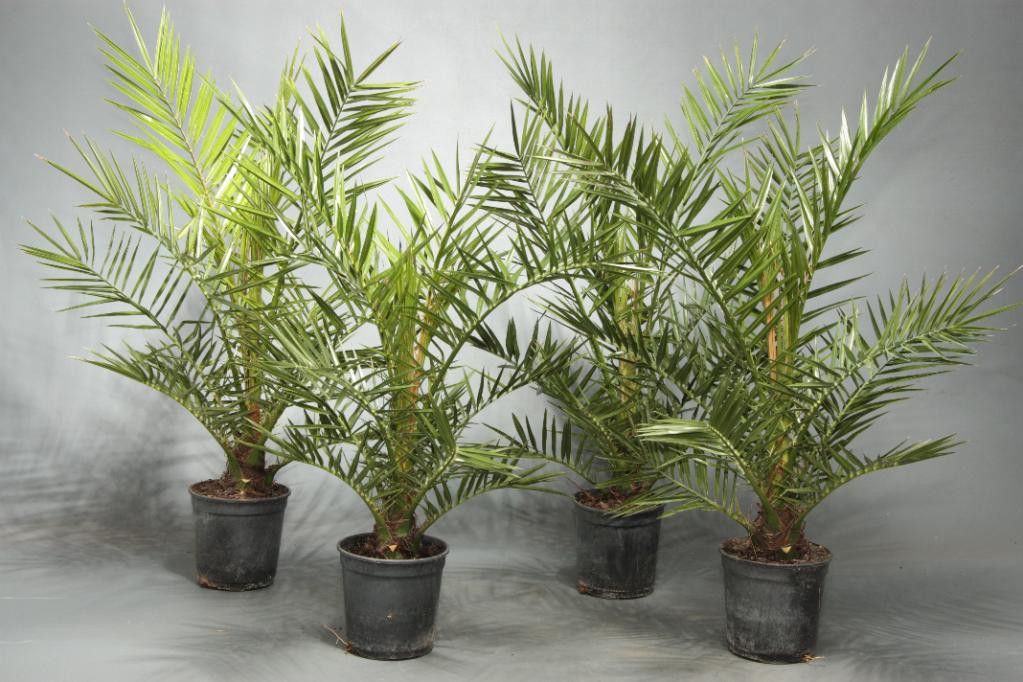
Date palm trees are photophilous; in indoor conditions they grow best near windows facing south. They maintain a healthy appearance with increased air humidity and regular watering during active growth.
Distinctive features:
- very resistant to diseases and pests;
- the roots are sensitive to cold: you do not need to place a tub on a cold floor and window sill;
- need an influx of fresh air, but get sick if they are in a draft.
The photo shows the Robelin palm and the Canary palm.
Rapis
There are two varieties of Rapis - high and low. The latter is most often purchased by the owners of the apartments, as it is notable for easy cultivation and compactness. Adult low Rapis reaches 1.5 m in height, and high - 3.
Both species are multi-stemmed, they have the form of a bush. Wide and oblong leaves are located on thin fibrous petioles and have a glossy surface. On the shoots of Rapis high short petioles are visible. The average leaf length is 20 cm, width is 2 cm. They have smooth edges and a pointed tip.
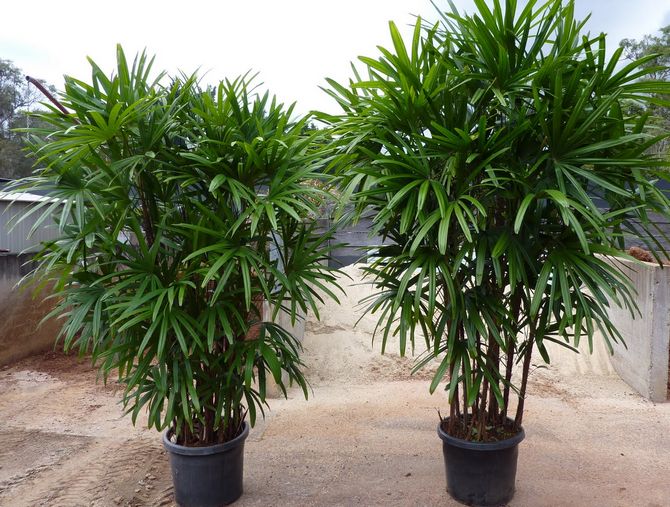
The plant prefers to be indoors with moderate air humidity. The best place in the house is near the west or south window. Permissible fall direct sunlight on the plant. Even with careful care, it blooms very rarely. The inflorescence is branched, and does not represent a special decorative value.
Howea
Howea is a bushy plant native to the Pacific Islands. The trunk is straight and thin, expanded at the base and reaches a height of 2.5 m.The crown of the trunk consists of very spreading cirrus leaves, which are located on both sides of the central vein at a distance of 1-2 cm from each other. Leaves have a saturated green color.
A suitable place to grow is a spacious lounge with ambient light. It also grows well in rooms with windows facing south and east. In order for Hovea to grow and develop normally, direct sunlight should not fall into the room.
Benefits of Hovea:
- does not need high humidity;
- normally tolerates a drop in temperature to 18 ˚C and a lack of light;
- not demanding care during the cold season.
Washingtonia
A distinctive feature of Washington is a fan-shaped crown formed by leaves on bare cuttings. Leaves end with sharp, hard spikes. The light brown trunk is straight, thin and rough, covered with remnants of leaf petioles and felt. Inflorescences are branched and panicled.
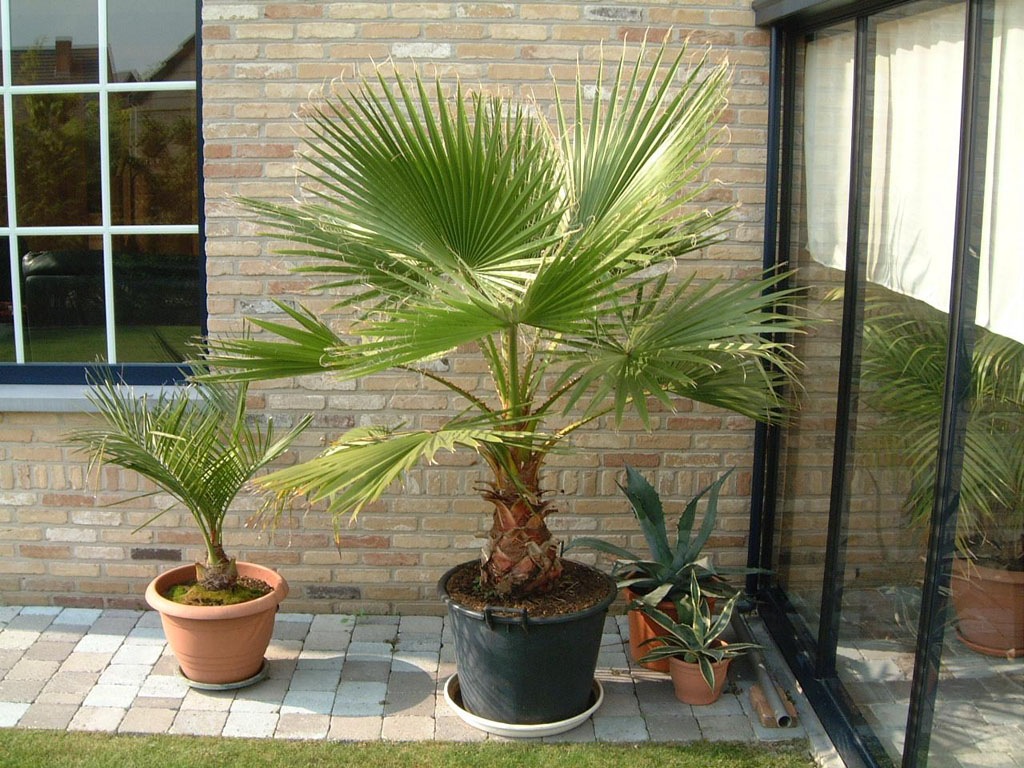
Liviston
Indoor Livistons grow up to 1.5 m, their leaves are fan-shaped. The latter grow only on the top of the palm. They are cut to the middle and rounded, located on a strong petiole with sharp edges. Adult palm trees have a small thorn on the petiole.
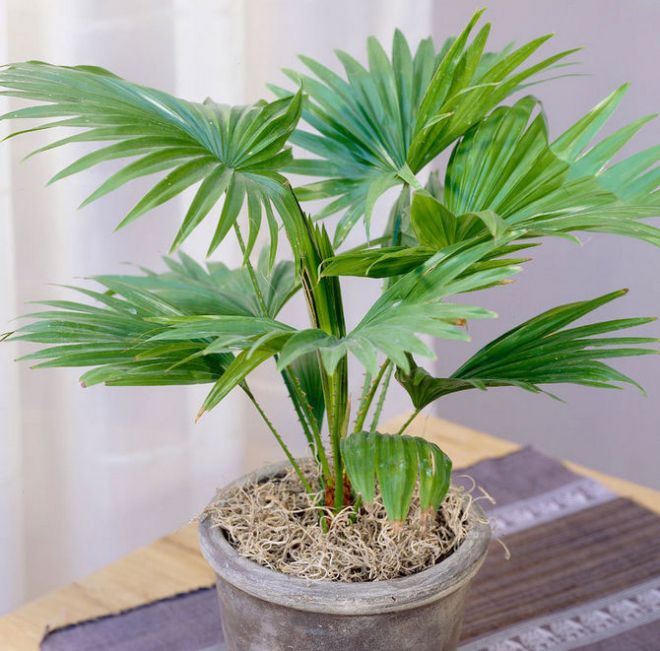
In spacious rooms, Livistons grow in breadth due to leaves, which can reach a meter in diameter. Liviston develops rapidly and is of great decorative value. At home, the plant needs careful care, since the crown can dry quickly with a lack of moisture.
Hamedorea
Homemade Hamedorea is also often called a bamboo palm. The plant has the shape of a bush with many thin bare stems. On each trunk there can be up to 7 leaves with long stalks. At home, you can grow palm trees 1 m high, in open ground - up to 2 m.
The plant blooms at a young age. Hamedorei flowers are collected in panicled inflorescence. The flowers are small, have a yellow color. It develops slowly, growing 1-2 new leaves per year. Foliage is concentrated in the upper part of the stem. The length of one sheet plate is about 40 cm.
Karyota
The birthplace of palm trees is tropical Asia. In the genus Cariota, there are 12 species. The height of indoor representatives does not exceed 1.5 m. A plant can have one or several trunks - grow in the form of a bush. Asymmetric leaves - large and dissected, most often resemble a triangle in shape. The color of the leaves of young plants is richly angry, but with age the foliage darkens. Kariota does not bloom when grown in a house, and even in botanical gardens this rarely happens.
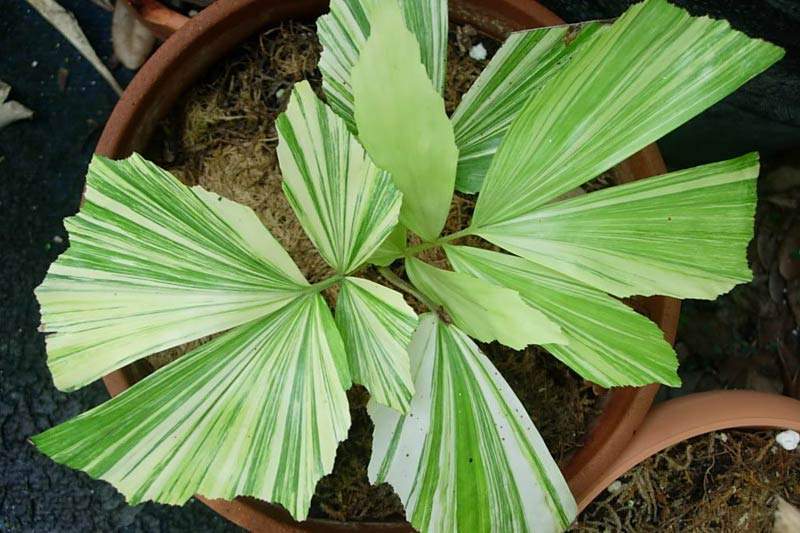
The most popular species is the fish tail. It is notable for the torn edges of drooping leaves and a bright color.
Yucca
The exotic plant grows to 1-1.5 meters in height. The stem of the plant is thick, expanding upward and ending with short branches. Yucca leaves are bright green, resembling a sword in shape. Their width is 8 cm, length - up to 75 cm.
In addition to indoor breeding, Yucca was widely used: from the leaves of the plant, durable fiber is made for ropes, burlap and denim. Baskets are weaved from dried leaves, and a natural dye is extracted from the roots.
Palm tree care at home, secrets and difficulties
Depending on the type of palm tree, home care may vary. But for any representatives of the subtropics, you need a spacious, well-lit room. In a period of especially active sun, the palm should be tinted by hanging blinds on the window so that the leaves do not burn. The air in the room should be clean and fresh, but drafts should not be allowed.
Lighting
Places for tubs should be chosen bright, but without burning sun, although sometimes bright light is acceptable for palm trees. It is advisable to place plants near the southwestern and southeastern windows. In winter, an additional light source must be installed. Phytolamps do not need to be installed close to plants to prevent leaf burns. 16 hours - sufficient daylight hours.
Priming
High-quality soil is a prerequisite for growing a healthy plant. The soil of palm trees should be light and loose, quickly absorb moisture. Soil with a slightly acidic reaction is best suited. When buying a finished substrate, you should pay attention to the presence of the following components in the composition:
- peat;
- sand;
- dolomite flour;
- expanded clay drainage;
- vermicompost;
- mineral fertilizers.
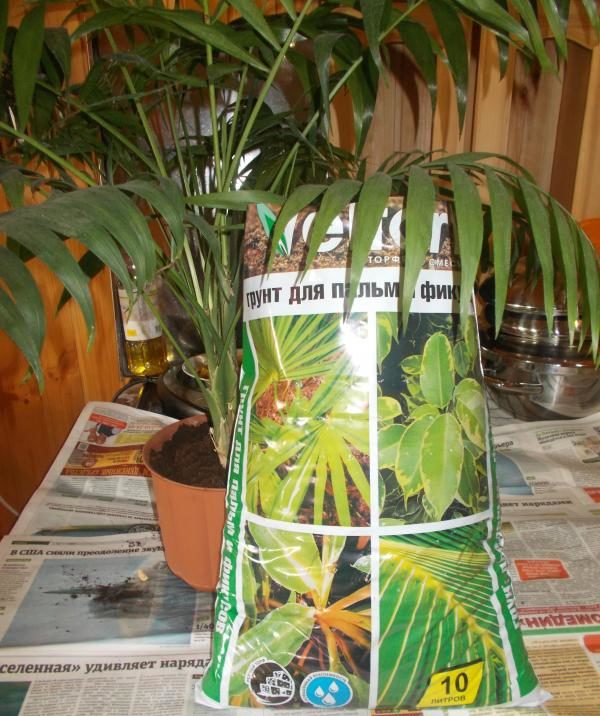
Soil can be prepared independently by mixing turf, leafy soil, peat and sand. In the substrate for young plants, the turf land should be less than for old palm trees. The drainage layer under the ground should be at least 3 cm.
Temperature and humidity
Palm trees of different origin need to ensure the optimal thermal regime for them. The temperature in the room in the summer during the day and night should be between 18-25 ˚C. The maximum temperature is 27 ˚C. In winter, the temperature must be reduced to 16 ˚C, which is especially important for subtropical plants.
- high rates for Hamedorei, Livistona, Karioty and Yucca;
- moderate - for Hovea, Rapis and Date palm;
- lowered - for Washington.
Watering and feeding
The soil of any home palm should be moist, but water stagnation is unacceptable. In summer, watering should be frequent - once every 2 days. In winter, watering reduces and moistens the soil as the soil dries. Water for irrigation should be at room temperature and settled. Periodically after irrigation it is necessary to loosen the topsoil.
Palm trees need to be fed with fertilizers in spring and summer; during dormancy, plants do not fertilize. Mineral fertilizers must be applied to the soil once every 16 days. The main nutrients are nitrogen and phosphorus. The effect of top dressing is noticeable after 2-3 days.
Pruning
Pruning is only necessary if the palm is very extended. This procedure helps to form a lush crown and give the plant a well-groomed appearance. No need to prune diseased plants or prune healthy plants in winter. Trimming home palm trees is better in summer or spring. The exception is cases if the plant is broken. Only damaged or dead leaves should be removed.
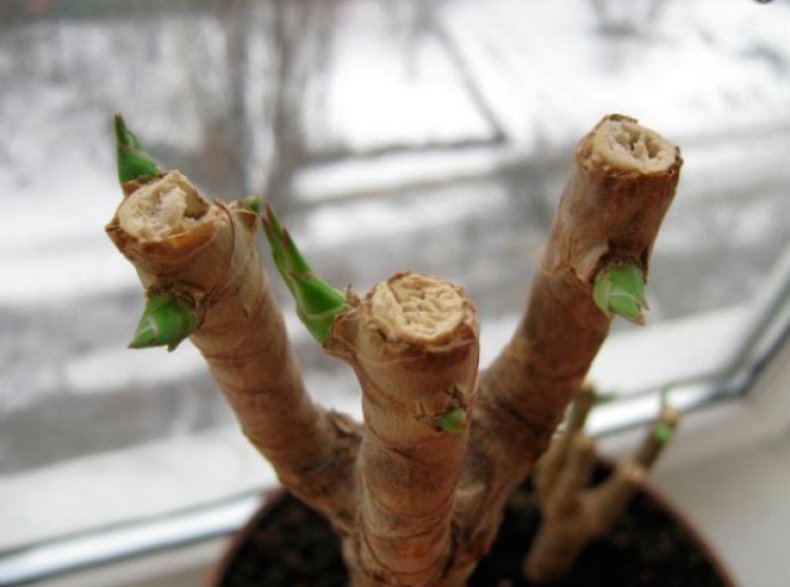
You need to trim the plants with a sharp sterile garden tool at the beginning of the growing season. You can not cut the shoots close to the stem: you need to leave 3 cm. At the end of the procedure, the places of cuts must be treated with garden varieties or charcoal.
Winter preparations
The room temperature must be reduced to 12 ˚C with the beginning of the heating period. Palm trees can be rearranged onto a warm but unheated balcony. Daylight hours in winter can be extended using lamps. Watering should be gradually reduced to 1 time per week and moisten the soil as necessary.
Diseases and major growing problems
With improper care or lack of it, palms become vulnerable to infectious diseases. Common diseases include:
- Fungus. Brown spots with a yellow border appear on the leaves, without treatment, the leaves gradually fade.The causes of the development of the disease include excess moisture in the soil, hypothermia of the plant and too humid air. You can get rid of fungi by reducing watering and treating the plant with fungicides 3 times with a frequency of 2 weeks.
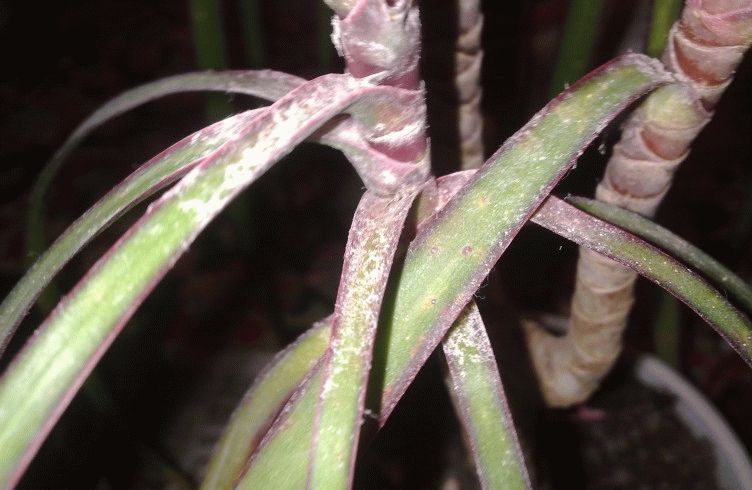
Room palm disease - Root rot. It occurs due to excessive watering and develops rapidly, affecting the roots. The leaves of the plant darken and fade. The plant can be cured only at an early stage of the disease by pruning diseased roots and then placing them in a fungicide solution. After the palm tree you need to transplant into a new soil and water moderately.
- Rot stems. Brown spots with a white coating appear on the leaves, the stems quickly rot. The disease develops due to temperature changes and a lack of vitamins. To cure a palm tree, the affected leaves must be removed and the palm planted in a new pot. To prevent the disease, the room should be regularly ventilated, and the plant should be fertilized.
Often gardeners are faced with problems such as:
- darkening of the lower leaves;
- brown leaf tips;
- the appearance of pests.
In order for the plant to remain healthy, it is necessary to adhere to the rules for care, maintain favorable conditions in the room and conduct regular preventive measures against parasites.
Home Palm Propagation and Transplantation
Seed propagation is the easiest and most common breeding method. For planting, you need to select seeds that have not been stored for long after harvest. Seed preparation:
- Remove the outer shell.
- If the peel is too thick, it must be carefully filed.
- Put the seeds for a couple of days in warm water so that they swell.
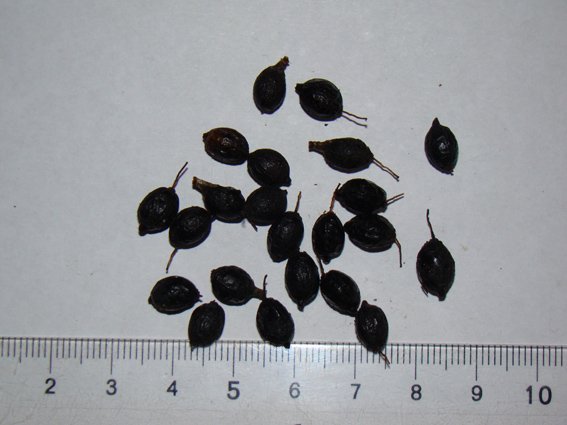
Wooden boxes or plastic cups are suitable for planting. The sowing tank needs to be filled with soil with an upper sand layer. You need to deepen the seeds by 2-3 cm. After the soil you need to moisten using a spray gun so that the sand does not erode. Cover the top of the container with a film to create a greenhouse effect.
Pots should be kept in a warm and dark place. Watering should be moderate for the first 2 weeks, at intervals of 2-3 days. After the procedure, you can divide and water the soil every other day. The room temperature should not change.
With the advent of seedlings, the pots need to be rearranged in a more lighted place. Seedlings must be planted in separate containers and covered again with film or glass. Over time, the grown sprouts can be adapted to the climate of the room by removing the film, and then transplanted to a permanent place.
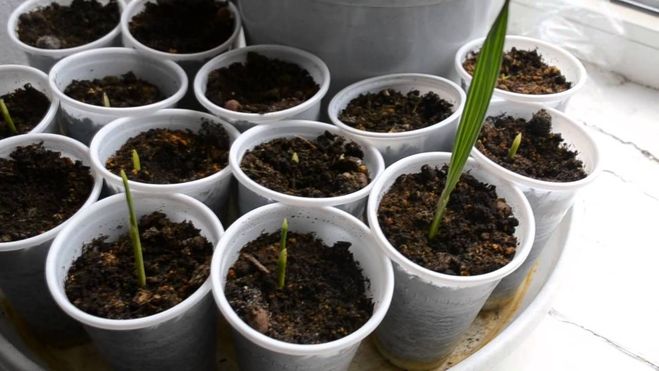
Young plants need to be replanted more often than old ones: intensively growing palm trees need an annual transplant, while old ones are enough to replant every three years. Plants living for 5-6 years, it is better not to transplant unnecessarily. The best time for a transplant is April-March.
New soil for the plant should be loose and nutritious. The following components should be in the purchased or manufactured substrate in a ratio of 2: 2: 1: 1: 1:
- soddy soil;
- sheet earth;
- peat;
- compost;
- sand.
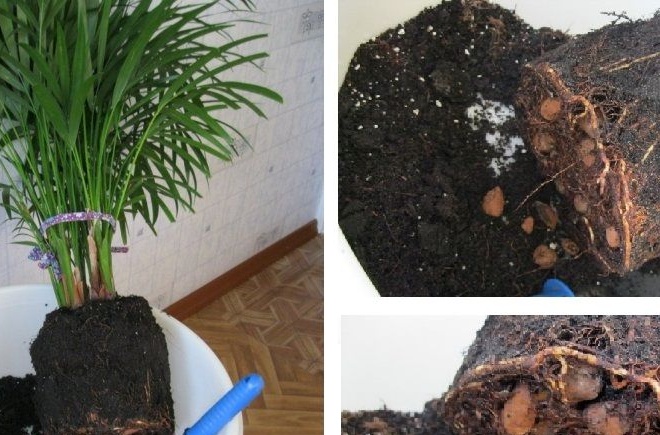
The choice of transplant pot depends on the root system. If it grows in breadth, the pot should be wide, but shallow. If the roots grow vertically, then the capacity for the palm should be deep. Before transplanting, the roots need to be inspected and removed damaged areas.
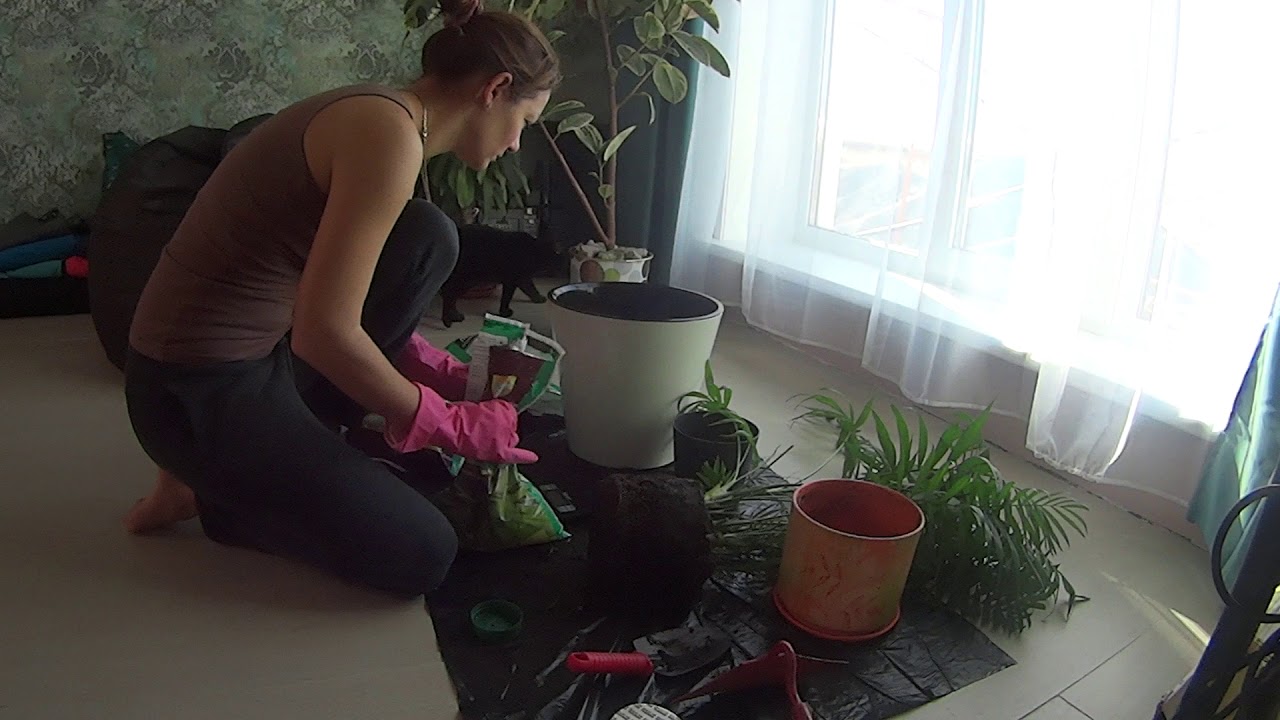
A few days before transplanting, watering should be stopped. When the soil dries, the plant needs to be pulled out of the old tub with an old earthen lump, and move the palm into a new, more spacious pot. At the bottom of the latter, you first need to put a drainage layer and compost. If the soil is infected with pests, then it must be completely replaced. You can water the plant immediately after transplantation.
Common Growing Questions
Home palm trees are perennial plants that will decorate any interior. If you follow the simple rules regarding watering and temperature conditions, they do not cause much trouble to the owners and remain green all year round.

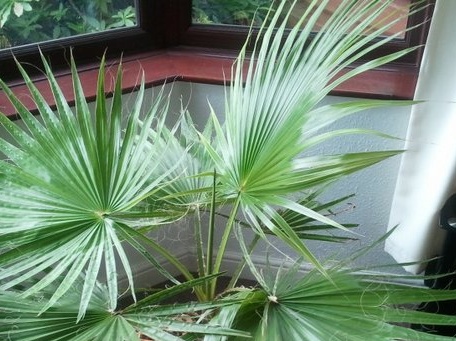




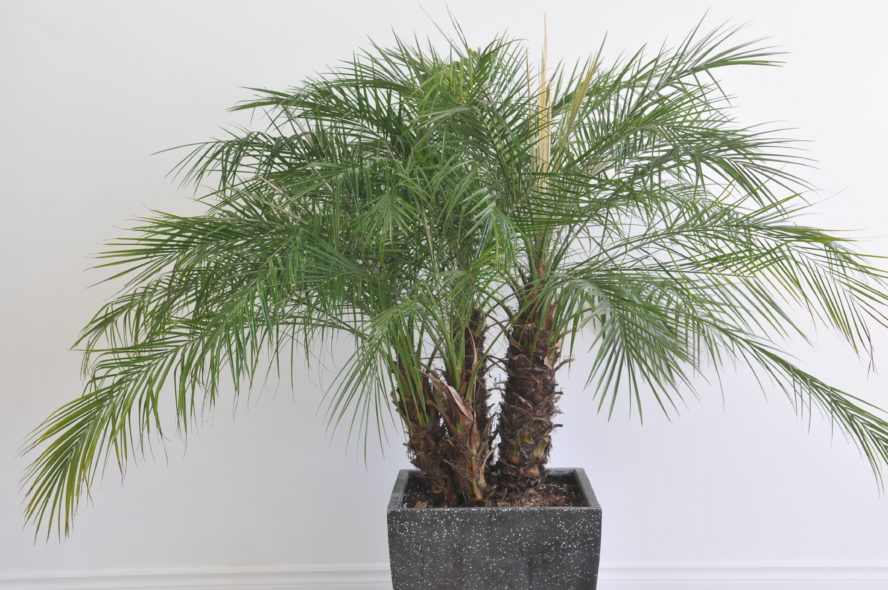
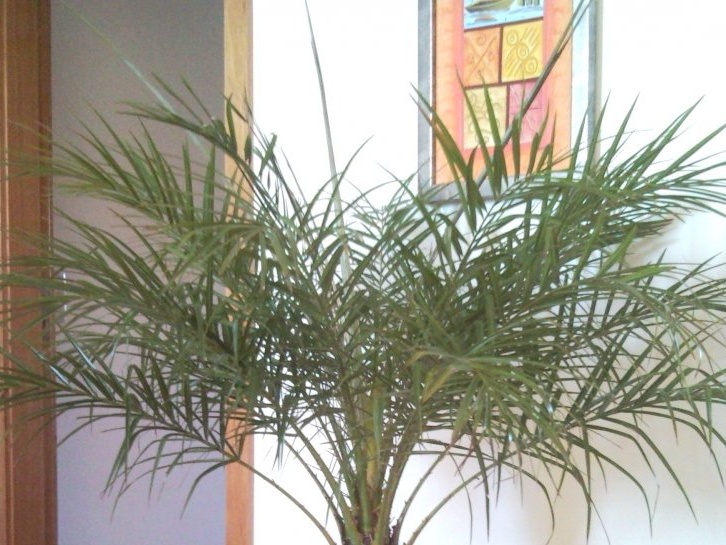
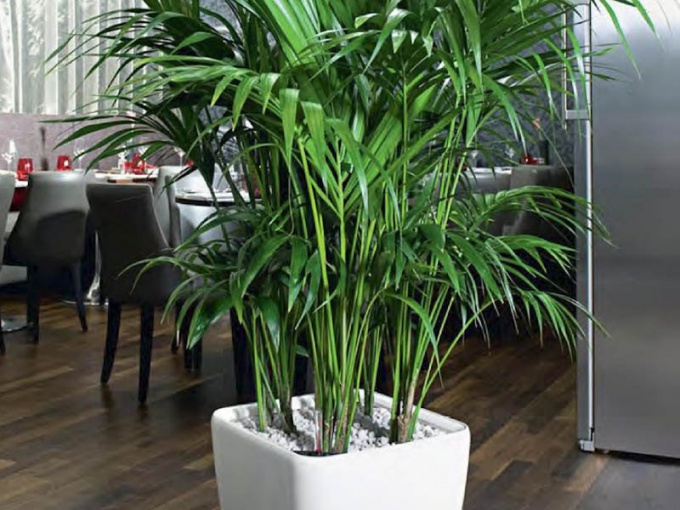
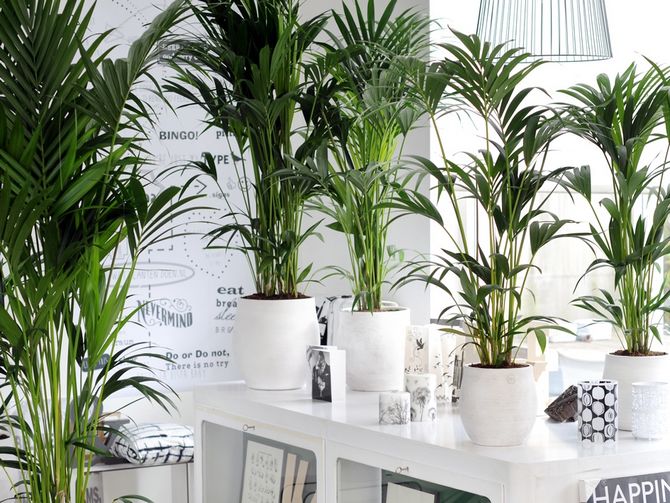
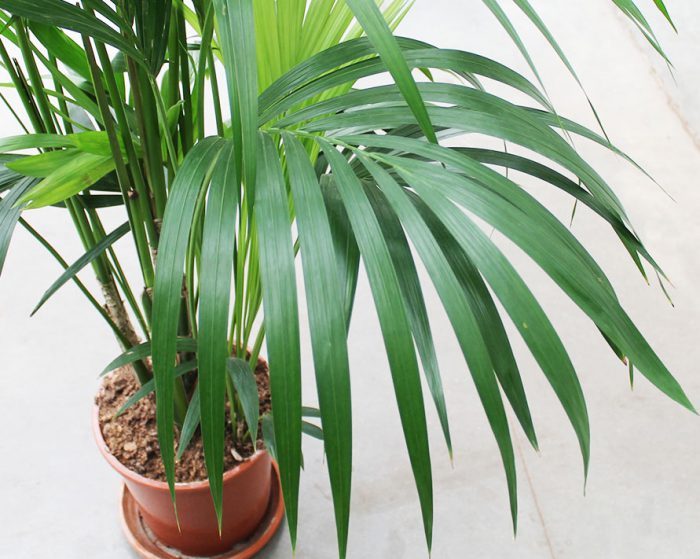
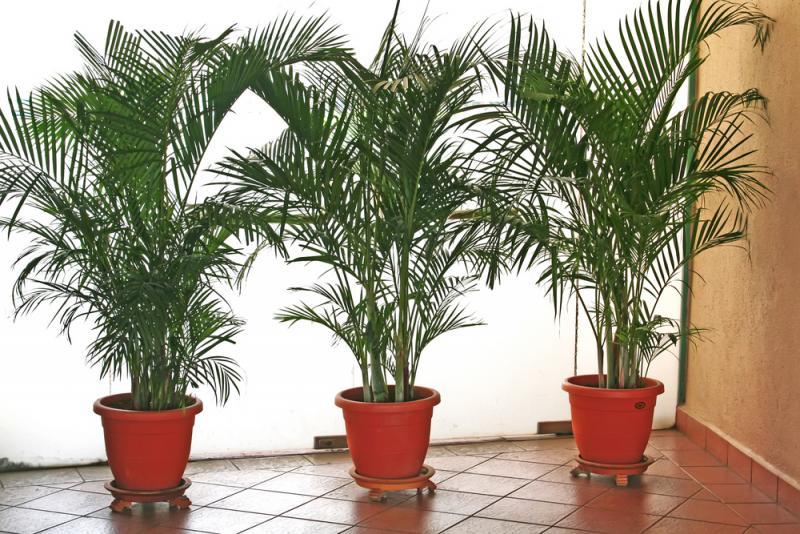
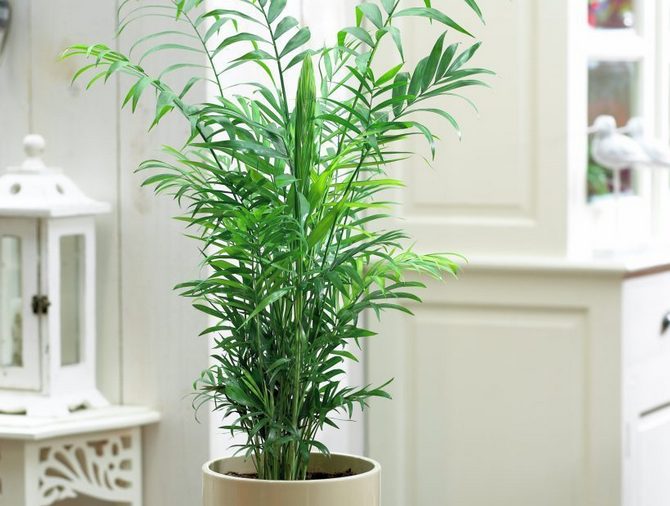
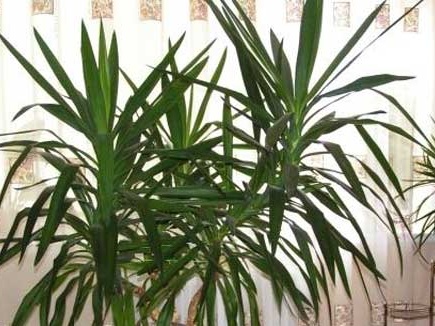




 10 beautiful annuals that bloom all summer
10 beautiful annuals that bloom all summer Sow in the ground, without seedlings: 10 beautiful and unpretentious flowers
Sow in the ground, without seedlings: 10 beautiful and unpretentious flowers Platicodon planting and outdoor care
Platicodon planting and outdoor care Hosta - planting and care in the open ground in the Urals
Hosta - planting and care in the open ground in the Urals